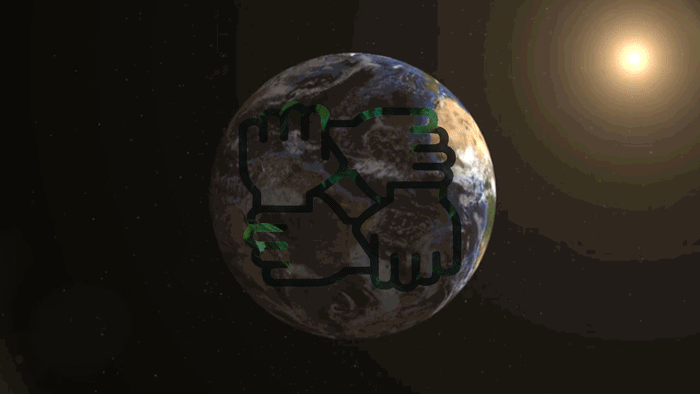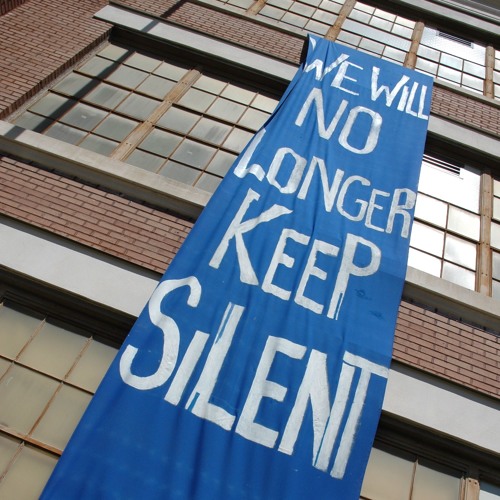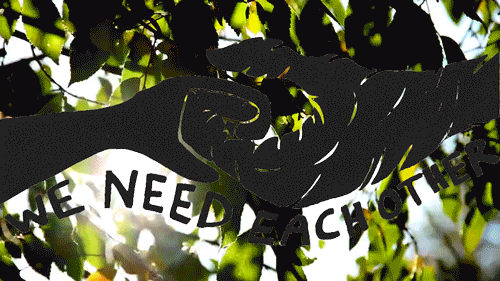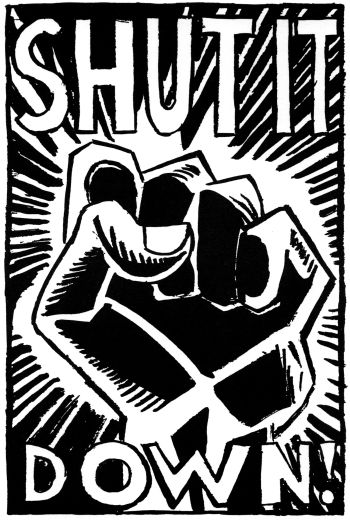
Mutual aid is as ancient as our planet! Intercropping (sharing agricultural space), medical assistance, free education and protecting another life dates to prehistory. The Three Sisters of corn, beans and gourd were borne from a mutual love for fellow person, nature's sustenance. People plowed the soil. They tended the plants. Those plants fed the village.
Mutual aid describes a symbiotic relationship between one being and another in need. The community volunteers in most cases to transform an existing environment. If community is harmful, there are ways to heal the individual.
Some mutual aid projects are ongoing, and others only fulfill a goal within a certain deadline. We all agree that a better world is not built overnight. So the building blocks must be sturdy for future use and generations.

What Is Mutual Aid?
Mutual aid's logistics should prioritize compassion foremost. That is a tough job when we are confronted with systemic loss: homelessness, joblessness and death.
Assistance is supervised BY the more vulnerable neighbors around us. Everybody holds accountability to one another and for themselves, no matter what the role is.
You are not judging or judged in these care networks because shame has less reliable results than a need-based communication.
Team members help with no attached strings in a preferable scenario!

Flow-Chart of Mutual Aid Process: Consensus is reached after a group discussion on deliverables.
Aid is distributed to members and broader community. Outreach can include
volunteer intake, dialogue with other collectives plus media.
What Is The Non-Profit Industry/Industrial Complex?
Where does mutual aid diverge from the non-profit industry/industrial complex and charitable models?

Social programs do save lives and there is no denial of that fact. The key criticism remains on bureaucratic processes like board/stakeholder approval, income requirements and delayed deliberation for them, however. Nothing is usually free with institutional guidelines. Time costs constituents' survival.
Take the D.C. encampment shutdowns where less than 50% of park tenants are on the HHS or Pathways' (a local nonprofit) housing list after forceful removal. Winter's brutal conditions combine with inadequate solutions for public disaster.
Focus does become a conflict of interest when an organization's praxis does not necessitate a public conversation with said people, and usually does place self-preservation over healthy community engagement. Charities create a barrier between immediate relief and the average person.
Although nonprofits have been mediaries or co-distributers of aid, increasing attention turns to a complex conundrum: a complex which is reliant on a perpetually inequal system by design. State-adjacent entities can disrupt mutual aid's momentum, fundraising and ideology through various means.
One is representation that lacks congruence. Leadership is not guaranteed to be reflective, or mindful, of intended community. That power is held by non-white employees less than 20% of surveyed cases on a national scale. Another counter-productive aspect is opaque politics. Who leads? Why?
This determines allocation as well. Public funds convert into private dollars that circulate further from the marginalized individuals out there. The money can be retracted if a choice is deemed too radical, like INCITE! in 2004 (a women, LGBTQ+, gender non conforming liberation body). Or the non-profit may enact the opposite of their ethics in conflict.
So Others Might Eat provides a perfect example: piloting an affordable housing program that also evicts applicants (Street Sense Media). This arrives as a rude awakening for already impacted communities in Washington, D.C. And it unfortunately does not end there.
Michigan-based Kids Food Basket sent a cease-and-desist letter to Black organizers last January. Their legal dispute concerned online criticism via polling. Defendants were extremely disappointed.
"If our community is ever going to heal and grow from its current injustices, those without traditional access to power need to be able to call out white supremacy. We need to be able to freely call out violence and its norms.
We need to hold businesses, systems, and nonprofits accountable when they use these tactics to scare community members from not speaking our truth," affected organizers across Grand Rapids correctly asserted in January 2021.

Mutual aid is people-led, dependent on assessing the easiest way forward. Difficult dialogue should be expected. "It’s time for us to put our commitments to equity and justice to work," author Breannah Oppenhuizen reminds us (Candor Media).
Recipients' eligibility depends on criteria which reinforce implicit bias and socioeconomic disparity in other words with non-profits. Mutual aid does not discriminate. As such, more independence is possible to collaborate among progressive working groups. Response is rapid.
METHODS AND FUTURE WITHOUT STATE
Grassroots methods like mass canvassing, phone banks, social media blasts, in-person markets or distribution hubs are visible beacons. Every person makes a conscious decision to even the gaps. These communal efforts are immense investments of energy, money and time. Yet they manifest abundance even in supposedly scarce times. The process is horizontal and clarifiable. Harm is addressed preemptively. It should not be enabled.
We are accustomed to a particular relationship: activism vs. NPIC (non-profit industrial complex), if not wholly absorbed into it. Afro-anarchist abolitionist Decolaniza denounces this.
"We are on the forefront of ideological warfare & the idea of centering “unity” & “cooperation” in the face of how many organizers™ & activists™ who organize alongside the state/NPIC & materialize their ideologies leaves room for counter insurgency and co-optation." (Twitter)
Indeed, capitalism persists on this confusion alone. Infiltration is a valid fear when surveillance can interrupt mutual aid entirely (Electronic Frontier Foundation). Stay safe as possible.
Countless examples show that large revenue streams are not always foundation-affiliated. Look at the Black Panther Party, INCITE!, Good Trouble Co-Operative in D.C. who continually administer free goods every week, the Marielle Franco Institute, Food Not Bomb's 1,000 global chapters against oppression...revolution is nearer in the right light.

What if we dismantled status quo this way one by one, banded together and amplified these movements? Would that not be what anti-capitalism truly demands? Is that not Martin Luther King Jr.'s vision: a true Poor People's Campaign?
2022 may embody some of his last words: "the beginning of a new co-operation, understanding, and a determination by poor people of all colors and backgrounds to assert and win their right to a decent life and respect for their culture and dignity". Helping one helps everyone.
Black Panthers' 10-Point Principles
Poor People's Campaign (2000's)
Related Reading
Community Bonds and Mutual Aid Sustain Anti-Fascists Targeted by the State (Truthout, 1-04-22)
Nonprofits and White Supremacy (Candor Media, 1-29-21)
Where Compassion Meets the Reality of Dollars and Cents (Street Sense Media, 11-19-21)
Race to Lead: Confronting the Nonprofit Racial Leadership Gap (Building Movement Project, 8-19)
The Revolution Will Not Be Funded: Beyond the Non-Profit Industrial Complex (INCITE!, Duke Press, 2017)